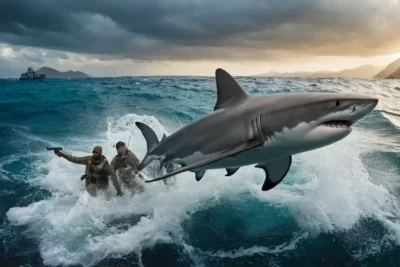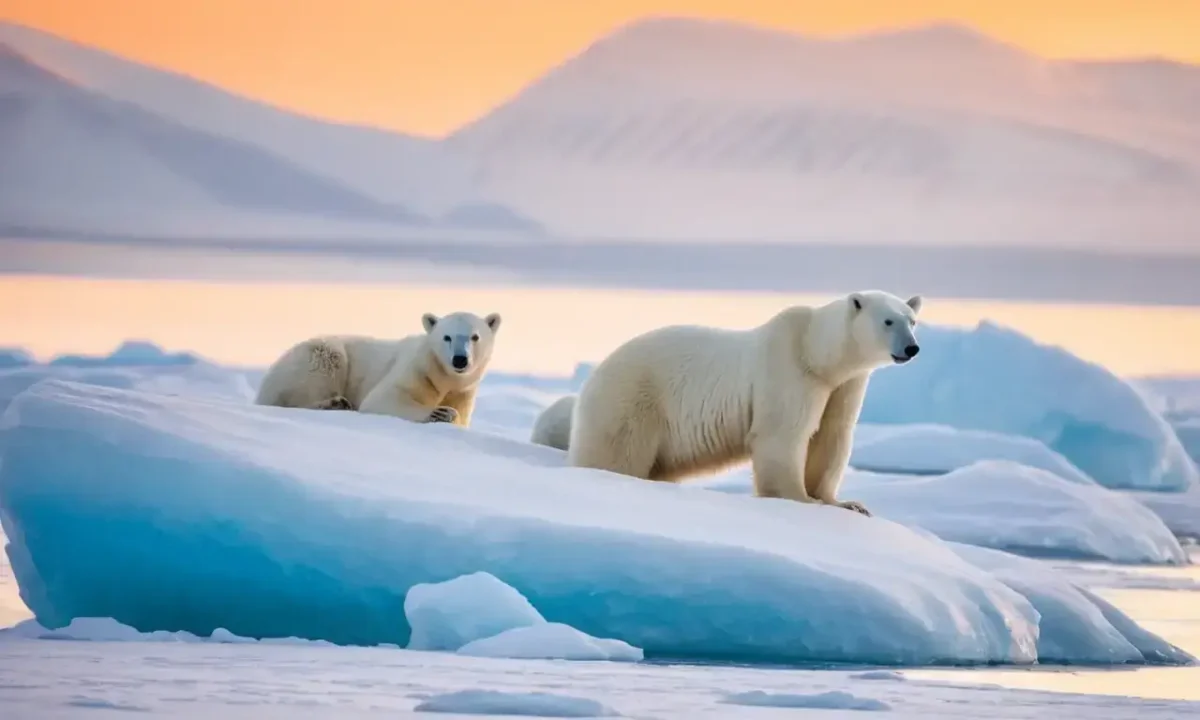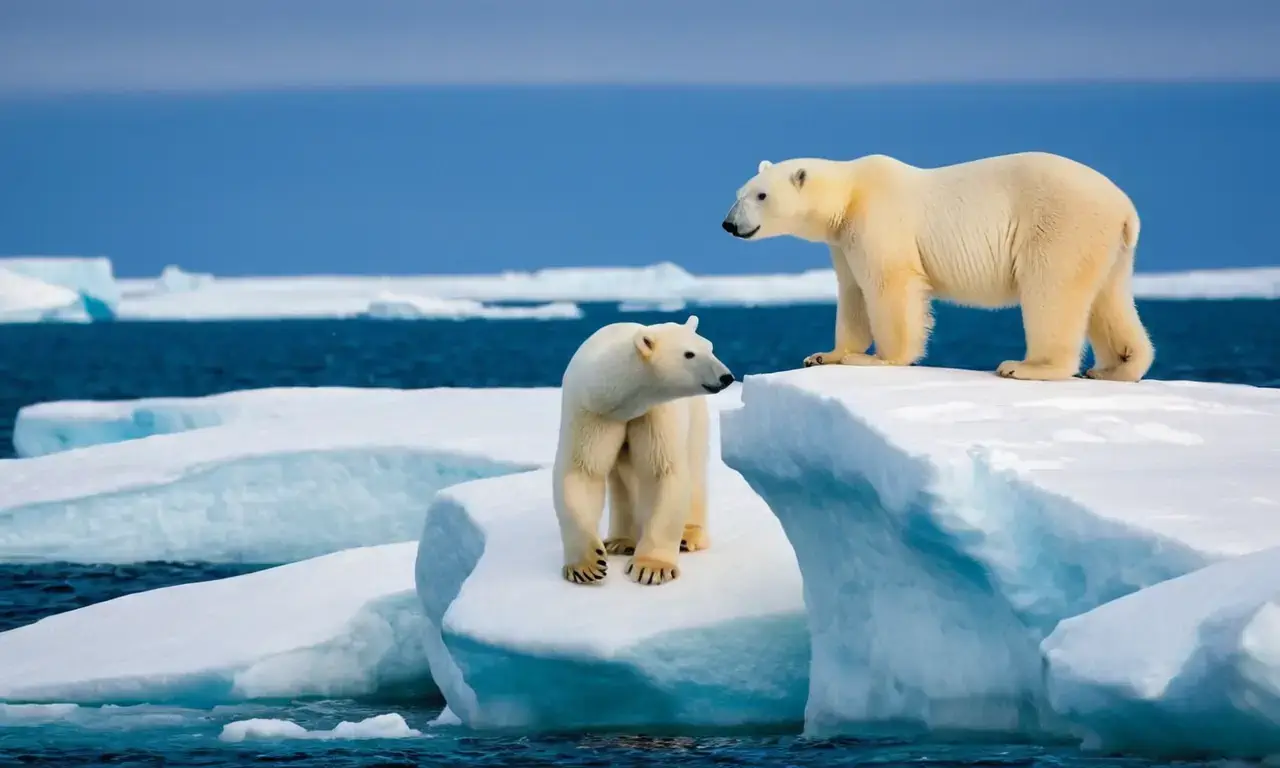
Polar Bears: Apex Predators of the Arctic

Polar bears, scientifically known as Ursus maritimus, are one of the most iconic and awe-inspiring creatures in the animal kingdom. These majestic animals have been a symbol of power and resilience for centuries, thriving in the harsh yet beautiful environment of the Arctic. Their ability to adapt to extreme conditions has made them a fascinating subject of study among scientists and wildlife enthusiasts alike.
This article aims to delve into various aspects of polar bears' lives, from their diet and hunting strategies to their physical characteristics and conservation status. We will explore what makes these apex predators so unique and how they are coping with the challenges posed by climate change. By understanding more about these incredible animals, we can better appreciate their importance in maintaining the balance of our planet's ecosystems.
Habitat
Polar bears inhabit the Arctic region, specifically within the Arctic Circle, where the sea ice provides them with a platform to hunt and live. Their habitat is characterized by vast expanses of frozen tundra, which they traverse on foot or using their powerful swimming abilities. The Arctic ice cap serves as both a hunting ground and a shelter from harsh weather conditions.
The distribution of polar bears across the Arctic varies depending on the availability of sea ice. In the summer months, when the ice melts, they tend to congregate in areas with more stable ice coverage, such as Greenland and northern Canada. During the winter, they can be found in larger numbers in regions like Alaska and Norway, where the ice is thicker and more extensive.
Understanding their habitat is crucial for managing polar bear populations effectively. The changing climate has significantly impacted their living conditions, leading to a reduction in sea ice coverage. This shift not only affects their hunting opportunities but also forces them to adapt to new environments, which can be challenging for these magnificent creatures.
Diet
The what can polar bears eat is primarily composed of seals, which are their main source of nutrition. These marine mammals provide the necessary fat and protein that polar bears need to survive in one of the harshest climates on Earth. Polar bears hunt seals by waiting at breathing holes in the ice or by making shallow dives into the water to catch them off guard.
In addition to seals, polar bears also consume other marine mammals like beluga whales and walruses. These larger prey are hunted less frequently due to their size and the difficulty of catching them. On land, they occasionally eat reindeer and birds, which supplement their diet during periods when seal hunting is challenging or scarce.
The dietary habits of polar bears are closely tied to the availability of sea ice. With the reduction in ice coverage due to climate change, their access to seals has been significantly impacted. This shift in their diet can have profound effects on their health and survival rates, making conservation efforts even more critical.
Hunting Strategies
Polar bears employ a variety of hunting strategies that are finely tuned for their Arctic environment. One of the most effective methods is waiting at breathing holes in the ice, where seals come up to breathe air. This technique allows polar bears to conserve energy while still being able to catch prey when it becomes available.
Another strategy involves making shallow dives into the water to catch seals off guard. These dives are crucial for polar bears as they allow them to ambush their prey without expending too much energy. Their powerful swimming abilities and sharp claws make them well-suited for this type of hunting, which is essential for their survival in the Arctic.
Polar bears also exhibit a unique behavior known as "stalking," where they approach their prey slowly and carefully, often using the wind to conceal themselves. This stealthy approach allows them to get close to seals without being detected, increasing their chances of success during hunts.
Climate Change Impact

Climate change has had a profound impact on polar bears' lives, affecting both their habitat and hunting opportunities. The reduction in sea ice coverage due to rising temperatures means that polar bears have less space to hunt and live. This not only affects their ability to feed but also forces them to adapt to new environments, which can be challenging.
The earlier melting of Arctic ice has resulted in polar bears spending more time on land, where they are more vulnerable to human encounters and lack the necessary resources for survival. This shift towards a terrestrial lifestyle increases the risk of conflicts with humans and reduces their chances of finding food. The consequences of climate change on polar bear populations are multifaceted and underscore the urgent need for conservation efforts.
Adaptation
Polar bears have shown remarkable adaptability in response to the changing Arctic environment. One notable adaptation is their ability to hunt on land, which they do by targeting alternative prey such as reindeer and birds. This shift towards a more terrestrial diet allows them to survive during periods when sea ice is scarce or absent.
Another form of adaptation involves polar bears' behavior. They have been observed swimming longer distances in search of food and altering their hunting strategies to accommodate the changing environment. These adjustments are crucial for their survival but also highlight the challenges they face due to human activities and climate change.
The ability of polar bears to adapt is a testament to their resilience, but it does not diminish the urgency of addressing the root causes of these changes. Continued research into their behavior and habitat needs will be essential in informing conservation efforts that can help mitigate the effects of climate change on polar bear populations.
Conservation Status
Polar bears are listed as vulnerable by the International Union for Conservation of Nature (IUCN), reflecting concerns over their declining population trends due to habitat loss and reduced hunting opportunities. The primary threat to their survival is the melting of sea ice, which affects not only their ability to hunt but also their reproduction and overall health.
Conservation efforts are underway to protect polar bears and their habitats. These initiatives include reducing human-polar bear conflicts through education and outreach programs, as well as implementing policies that limit hunting and habitat destruction. The Arctic Council has been instrumental in coordinating these efforts among member states, emphasizing the need for a collaborative approach to managing polar bear populations.
Physical Characteristics
Polar bears are one of the largest land carnivores on Earth, with adult males weighing up to 1,700 pounds (770 kg) and reaching lengths of over 9 feet (2.7 meters). Their thick fur coats, which can appear white or cream-colored due to the presence of transparent guard hairs, provide excellent insulation against the cold Arctic temperatures.
Their physical characteristics are also adapted for hunting and swimming. Polar bears have large paws that act as paddles when they swim, allowing them to cover long distances in search of food. Their powerful claws are used not only for grasping prey but also for climbing onto ice floes or rocks to rest or hunt.
Understanding the physical attributes of polar bears is essential for appreciating their unique place within the Arctic ecosystem and for informing conservation efforts that prioritize their well-being.
Reproduction and Family Life
Polar bears typically give birth to two cubs after a gestation period of approximately 7 months. The female bear will often choose a den on land, where she will nurse her cubs until they are old enough to accompany her on hunting trips. This early socialization is crucial for the development of young polar bears and their ability to survive in the harsh Arctic environment.
During this time, the mother polar bear teaches her cubs essential skills such as how to hunt small prey and navigate through the ice. The bond between a mother and her cubs is strong, with the female often protecting them from potential threats until they are able to fend for themselves.
The reproductive cycle of polar bears is closely tied to their survival in the Arctic. Understanding these dynamics can provide valuable insights into how conservation efforts should be directed towards supporting both adult and juvenile populations.
Behavior
Polar bears exhibit a range of behaviors that are unique to their environment. One notable behavior is their ability to hibernate during the winter months, which allows them to conserve energy when food sources are scarce. This adaptation enables them to survive in an area where resources are limited.
Their social behavior is also fascinating, with polar bears often interacting with each other through body language and vocalizations. These interactions can range from friendly encounters between mothers and their cubs to aggressive confrontations over mating rights or access to food sources.
Understanding the complex behaviors of polar bears provides a deeper appreciation for their place within the Arctic ecosystem and highlights the importance of preserving their habitats for future generations.
Conclusion
Polar bears are an iconic species that face numerous challenges due to climate change, habitat loss, and human activities. Their adaptability is a testament to their resilience but also underscores the need for concerted conservation efforts. By understanding their physical characteristics, behavior, and reproductive patterns, we can better inform policies aimed at protecting these magnificent creatures.
The future of polar bears depends on our collective action towards mitigating climate change and preserving their habitats. It is crucial that we continue to support research into their behavior and habitat needs, ensuring that conservation efforts are effective in safeguarding the survival of this incredible species for generations to come.
Leave a Reply





Related Links